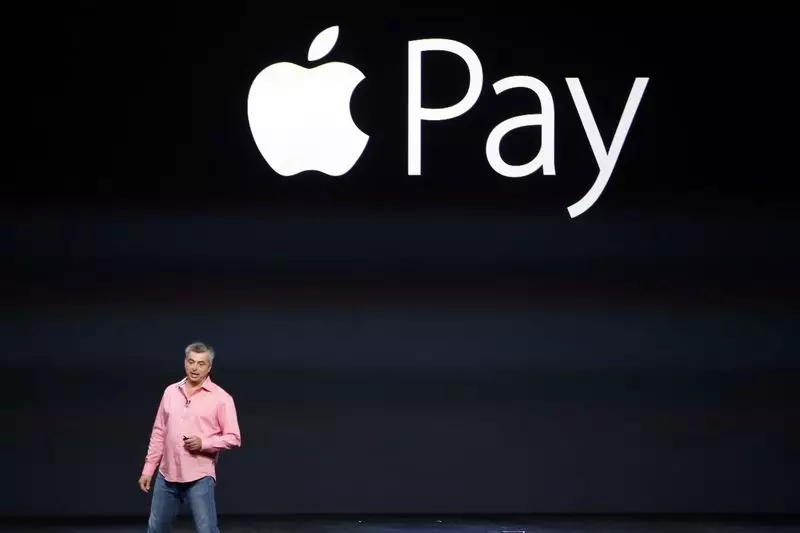In recent years, an increasing number of Americans have been turning to “buy now, pay later” services as an alternative to high-interest credit cards. This trend has been particularly noticeable during the holiday season, as consumers seek to stretch their budgets while shopping for gifts. Roxanne Ross from Florida is one such individual who plans to use a buy now, pay later service, Klarna, to purchase the latest Apple AirPods. By spreading the cost across four installments, she hopes to avoid the burden of higher interest rates associated with credit cards.
While buy now, pay later services may offer a convenient option for consumers like Ross, it is crucial to critically evaluate the potential pitfalls of these services. Consumer advocates have raised concerns about the long-term consequences of relying on these loans, particularly for cash-strapped individuals who may already be facing financial difficulties. It is important to recognize that these services often come with interest rates that can reach as high as 36%, which is the maximum lenders can charge in many states. This potential for exorbitant interest rates raises red flags and highlights the need for caution.
The increasing popularity of buy now, pay later loans has led to a surge in demand for debt counseling services. Contrary to the seasonal slowdown typically observed during the holidays, debt counseling services have seen a significant increase in clients. This suggests that consumers may be accumulating short-term debts on top of their existing credit card balances, adding to the already staggering $1 trillion in outstanding debt.
Furthermore, buy now, pay later services are not limited to specific types of purchases. Consumers can use these services to finance high-end luxury items like a $3,253 Jil Sander leather tote bag from Farfetch or simply purchase groceries from Walmart. The accessibility and wide-ranging utility of these loans make them appealing to a broad spectrum of consumers.
While some retailers argue that buy now, pay later options provide an alternative to credit cards with interest rates exceeding 20%, it is essential to remain skeptical. Financial experts and credit analysts warn against the potential consequences of relying on these loans, citing concerns about increased spending on non-essential items. The allure of instant gratification may lead some consumers to splurge on jewelry, trendy clothing, video game consoles, or appliances they cannot truly afford.
Providers of buy now, pay later services claim that they assess consumers’ credit ratings to determine the interest rates charged. Although these services often heavily advertise 0% interest installment loans, the reality is that interest-bearing loans account for a significant portion of their offerings. For instance, Affirm reported that interest-bearing loans, which can last up to five years, constituted 74% of their products in the last quarter. This discrepancy between advertised benefits and actual loan offerings is cause for concern.
Despite claims by providers that consumers are made aware of the total cost of the loan, including interest charges, financially vulnerable individuals may unknowingly accumulate substantial debt. These loans pose the greatest threat to those who are already struggling financially, potentially exacerbating their existing burdens. Consumers who rely on these loans to finance essential items like food and other necessities may find themselves trapped in a cycle of debt, creating further financial instability.
Even for users who diligently make their payments and avoid delinquency, there is a risk of overextension. Credit analysts warn that consumers who rely on these loans may quickly find themselves overwhelmed by escalating costs. Robert Boyer, a construction foreman from the Seattle area, experienced this firsthand. He accumulated over $4,000 in debt from multiple Affirm loans on Amazon purchases, including a drone, work boots, and tools. Boyer, who admits to being hooked on the instant gratification of small monthly payments, later discovered interest rates ranging from 30% to 36%.
It is crucial for consumers to understand the potential ramifications of relying on buy now, pay later services. Taking the time to carefully review the terms and conditions, including interest rates and hidden charges, can help individuals make informed decisions about their financial well-being. While these services may provide short-term benefits in terms of budget flexibility, it is essential to assess one’s ability to repay the loans and consider alternative options that may be less financially burdensome.
The rising popularity of buy now, pay later services warrants a critical examination of their potential pitfalls. The allure of convenient installment payments and the ability to obtain desired items immediately can lead consumers down a dangerous path of accumulating excessive debt. Vigilance and responsible financial decision-making are crucial in navigating the intricacies of these services. By understanding the risks involved and evaluating alternative financial solutions, consumers can avoid the potential hardships associated with excessive debt.


Leave a Reply